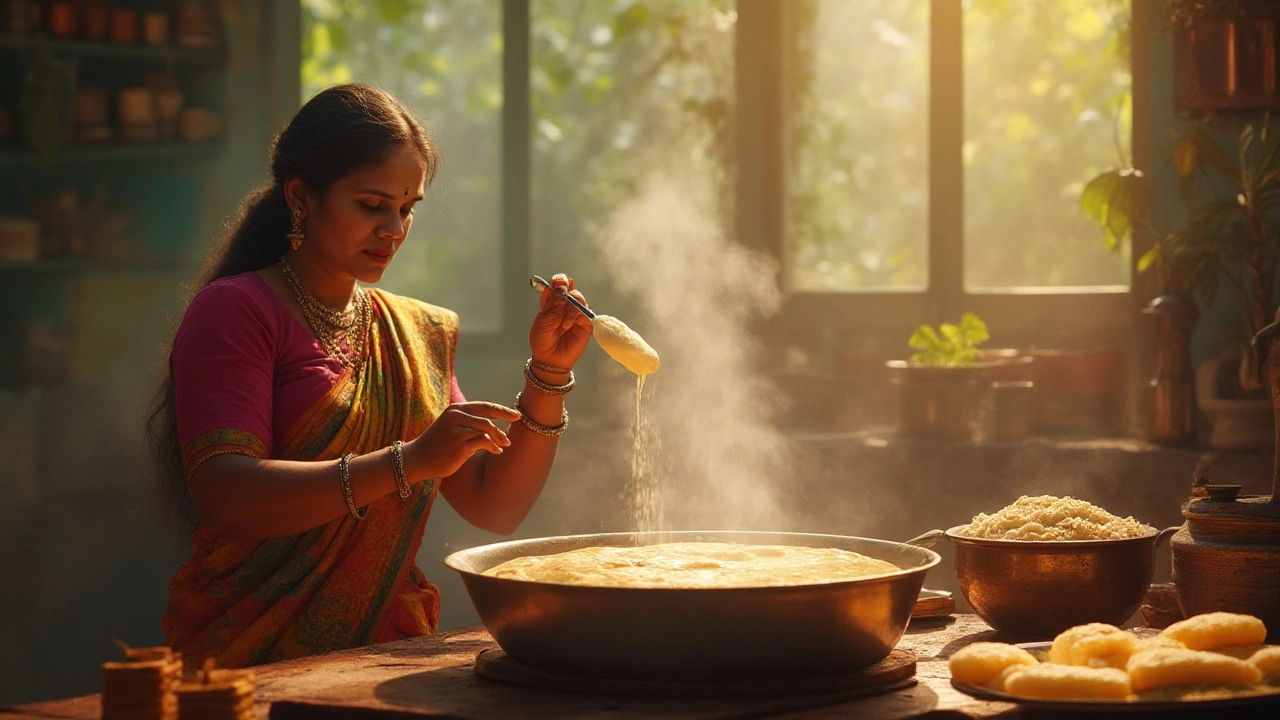Dosa Texture: Crispy, Fluffy, and Perfect Every Time
When working with dosa texture, the mouth‑feel and bite of a South Indian crepe made from fermented rice‑lentil batter. Also known as dosa consistency, it depends on factors like batter fermentation, leavening agents, and cooking technique.
One of the most common leavening agents is baking soda, a mild alkaline powder that releases carbon dioxide when it meets acid. Adding the right pinch creates tiny air pockets, which makes the dosas fluffy instead of dense. Another key player is fermentation, the natural process where wild bacteria and yeasts break down starches in the batter. Proper fermentation develops sour notes and strengthens the batter’s gluten network, giving the final crepe its signature crisp edge and soft interior. Finally, the batter, the mix of soaked rice, urad dal, and water that is left to ferment itself sets the stage: a thin, smooth batter spreads quickly, while a thicker one stays glued to the pan, affecting both crunch and chew.
Key Factors That Shape Dosa Texture
Dosa texture encompasses crispness, fluffiness, and the subtle tang that comes from fermentation. If the batter isn’t fermented long enough, the dosas will feel flat and lack that pleasant sour bite. Dosa texture requires proper fermentation – usually 8‑12 hours at room temperature, or a shorter period with a warm environment and a tiny pinch of baking soda to boost the lift. Baking soda influences dosa texture by accelerating bubble formation, especially when the batter is already slightly acidic from fermentation. The heat of the pan also matters: a hot, well‑seasoned cast‑iron or non‑stick skillet will create that golden‑brown crust in seconds, sealing the interior moisture and giving the dosa its signature crunch.
When you combine these elements – a well‑fermented batter, the right amount of baking soda, and a sizzling pan – you get a dosa that’s crisp at the edges, airy in the middle, and just a touch sour on the palate. Below you’ll find articles that dig into each of these pieces: how much baking soda to add for fluff, quick tricks to speed up fermentation, and common mistakes that ruin the texture. Use the tips to troubleshoot your next batch and turn a simple breakfast into a crowd‑pleasing showstopper.

Why Do We Add Curd to Dosa Batter? Science, Tips, and Real Flavor
Ever wondered why curd goes into dosa batter? Hauntingly simple, the answer packs a punch. Get the science, tips, and real flavor secrets of dosa here.